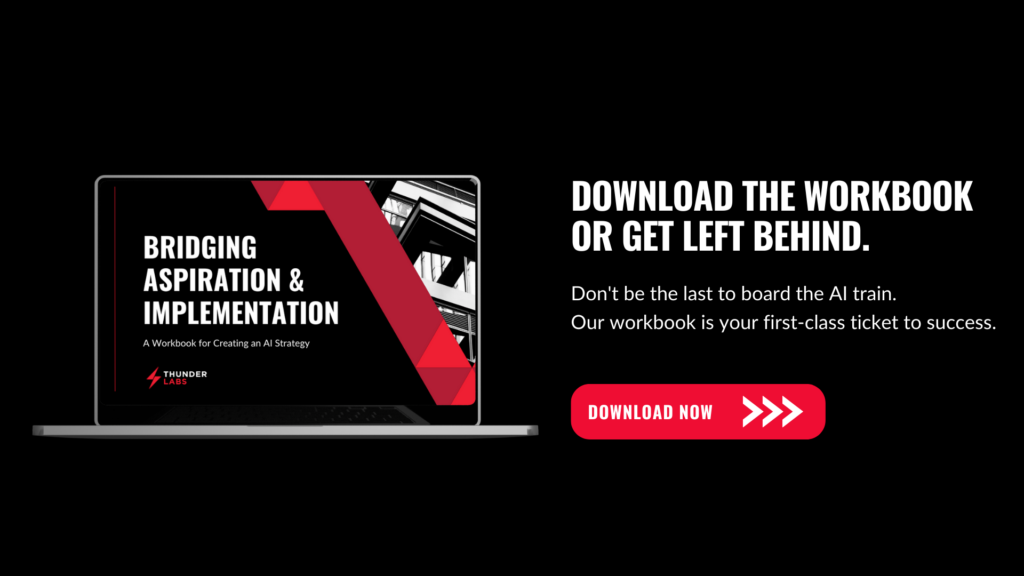If you’re still ignoring AI in your customer experience strategy, you’re playing a game of Russian roulette with your business. Found that hard to believe? Let’s talk numbers.
- According to Salesforce, 84% of customers say the experience a company provides is as important as its products or services.
- 71% of customers expect personalised interactions from companies, and 76% get upset when this doesn’t happen (McKinsey & Co)
- Successful personalisation initiatives can result in 20% higher customer satisfaction, sales conversion rates, and employee engagement (McKinsey and Co)
Now, combine that with these facts:
- AI can potentially lower client acquisition costs by up to 50% (Marketing in Asia)
- 70% of CEOs are highly interested in AI-enhanced CX (IBM)
- 57% of executives surveyed want to adopt AI to effectively respond to customer demands for more personalised experiences (IBM)
- 45% of leaders believe using predictive analytics to indicate future customer behavior will be an essential AI application (Sprout Social)
- IBM reported that businesses using AI for data analysis saw a 39% improvement in customer satisfaction scores compared to traditional data analysis methods (Source)
- Salesforce reported that businesses using AI chatbots saw a 67% increase in overall customer satisfaction scores (Source)
It’s a recipe for success that you’re missing out on.
Ignoring AI is like ignoring the internet in the ’90s. Remember those companies? Neither do we. They’re extinct. A report by Zendesk said that more than half of consumers will switch to a competitor after only one bad experience.
Best Use Cases for A.I. in Customer Experience
Let’s dive into how AI can be your secret weapon in customer experience.
1. Chatbots: The 24/7 Customer Service Rep
Chatbots are AI-driven programs that interact with customers in real-time, answering queries, solving problems, and even making recommendations. They’re like your customer service reps, but they don’t need sleep or coffee breaks. The importance? They offer immediate, round-the-clock assistance, which is exactly what today’s impatient consumer demands.
According to a study by IBM, chatbots can handle 80% of routine tasks and customer questions. They went on to say, “In most cases, digital assistants infused with AI drive three key imperatives: improving UX, lowering OPEX, and generating new revenue streams.”
Sephora’s chatbot on Facebook Messenger not only helps customers find products but also books appointments and offers a virtual makeup trial. Their chatbot enabled them to have 62% fewer steps to book appointments. This has led to an 11% higher conversion rate compared to other appointment booking channels.
2. Personalisation: Making Every Customer Feel Like a VIP
Personalisation in customer experience means tailoring services or products to individual customer preferences. With AI, you can analyse data to understand customer behaviour and preferences, making them feel seen and valued.
According to Accenture, 91% of consumers are more likely to shop with brands that provide relevant offers and recommendations (source).
Netflix leverages AI to enhance user engagement and retention, with 80% of viewed content stemming from its AI-driven recommendation system. This personalised approach not only boosts viewership but also aids in subscription renewals. Additionally, the platform’s AI algorithms help maintain a relatively low churn rate of around 2.3% — incredibly low in comparison to competitor Hulu with 4.1% — by identifying at-risk subscribers and targeting them with tailored content or offers.
3. Predictive Analytics: Solving Problems Before They Happen
Predictive analytics use AI algorithms to analyse data and predict future outcomes. In customer experience, this can mean predicting customer needs or identifying potential issues before they escalate.
According to BCG, corporate banks can reduce customer attrition by 20 – 30% by employing a predictive analytics-based churn model.
Rolls-Royce uses AI to monitor and analyse engine data to predict aircraft engine failures before they happen, saving airlines millions in unscheduled maintenance costs, reducing downtime, and increasing reliability.
4. Voice Assistants: The Future of Hands-Free Customer Service
Voice assistants like Alexa or Siri use AI to understand and respond to voice commands. For businesses, this means offering a hands-free, frictionless customer experience.
Results from Juniper Research reveal that consumers will spend $19 billion on voice-enabled products by 2022, indicating the growing importance of voice assistants in customer experience.
According to Digiday, one in five customers who can order a pizza delivery with one click through the Domino’s Easy Orders option has asked Amazon Alexa instead.
Don’t Get Left Behind
So, you’ve got two choices: you can either continue to ignore AI and let your competitors leave you in the dust, or you can embrace the future.
If you’re leaning towards the latter, we’ve got something to kickstart your journey: our AI Strategy Workbook. It’s a comprehensive guide designed to help you integrate AI into your customer experience strategy seamlessly.
And if you’re feeling a bit overwhelmed, don’t sweat it. ThunderLabs is here to help. We’re experts in practical AI implementation, and we’d love to help you avoid becoming a cautionary tale.
What are you waiting for? The future isn’t going to wait.



